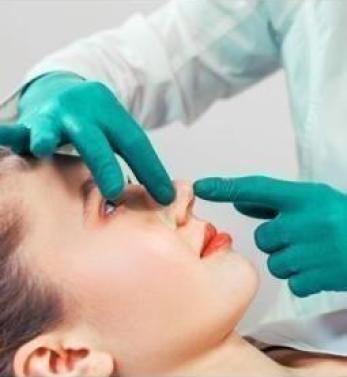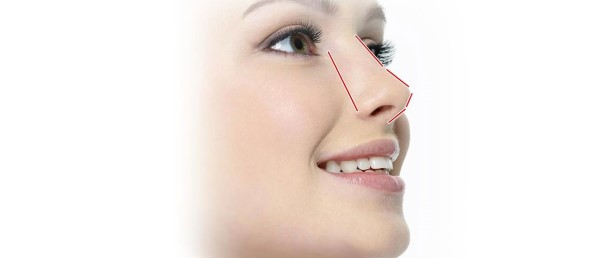









The surgery performed to eliminate the undesirable results of the previous rhinoplasty (nose aesthetics) surgery is called revision rhinoplasty (correction nose aesthetics). It is also called “Secondary Rhinoplasty”. Unfortunately, rhinoplasty surgery does not result in positive results in every patient, and revision (correction) surgery is required at a rate of 5-15% after primary rhinoplasty (primary rhinoplasty). These rates are taken from the average of the publications about the results of rhinoplasty in our country and in the world. Rates may vary depending on the surgeon's experience, the difficulty of the nose in the first operation, or whether the surgeon also operates on difficult noses. However, every surgeon who performs surgery has patients who require revision at a certain rate.
We can divide revisions into minor and major revisions. In minor revision; The result of the first operation is acceptable and minor touch-ups are required. The patient may be happy with their current nose and general appearance, but may require minor corrections. However, if there is significant deformity as a result of previous rhinoplasty surgery, major revision is required. Minor revisions can often be made in 30-40 minutes. Major revisions may take 3-6 hours depending on the scope of the surgery.

Most Common Reasons for Revision Rhinoplasty
The tip of the nose can be compressed-narrowed, wide, asymmetrical, low, drooping or extremely shortened and upturned (pig nose). The nostrils may be asymmetrical or wide. There may be collapse of the side walls of the nose (alar collapse) and difficulty in breathing. The arch on the ridge of the nose may continue, collapse of the nasal dorsum, the appearance of a pollybeak as a result of insufficient removal of the cartilage in the nose, or the collapse of the nasal dorsum (saddle nose) as a result of excessive removal. There may be an inverted V appearance in the middle of the nose, twisted nose, continuation of deviation, irregularities on the nasal dorsum, excessive scar tissue development inside or outside the nose, skin and soft tissue problems. Almost all noses that require major revision are accompanied by difficulty in breathing through the nose. The continuation of nasal congestion after the first surgery is mostly due to the continuation of the septum deviation, swelling of the nasal concha (concha hypertrophy), nasal valve failure (internal and/or external), adhesions in the nose, and septum perforation.
When is Revision Rhinoplasty Performed? The Right Time for Correction Nose Aesthetics
Whether or not a revision will be required after primary rhinoplasty (primary rhinoplasty) is not clear in the first 1-3 months when the swelling in the nose still continues. A very obvious asymmetry etc. If there is, the need for revision can be foreseen in the early period. It is necessary to wait at least 6 months, ideally 1 year, to decide on the revision surgery and to determine the scope of the surgery. However, there are some exceptional cases. Immediately after the operation, noticeable defects can be corrected in the early period, preferably by the same surgeon, with surgery. Again, in cases where the nose is reduced too much, revision can be made in the early period without the development of adhesions and tight connective tissue, without the skin contracting.

Why Is Revision Rhinoplasty Surgery More Difficult?
Revision surgery differs from primary surgery. The tissue planes were often narrowed, the cartilage and bone tissues that were very valuable to us were removed excessively or asymmetrically, and the forces during healing bent the weak or weakened cartilages. This situation requires more careful and gentle work during the surgery. Skin and soft tissue are very important in revision rhinoplasty. Often there may be a scar tissue on the skin. Revision rhinoplasty has a more intense inflammatory tissue response than primary rhinoplasty. In addition, nasal septum cartilage is often used or insufficient in the previous surgery. Deformation and incompleteness of normal anatomical structures make revision surgeries more difficult than primary rhinoplasty. At this point, the experience and patience of the surgeon becomes very important. Moreover, even when everything is done properly in revision surgery, the healing response of the existing tissues and skin will also affect the result.
How is Revision Rhinoplasty Surgery Performed?
Minor revisions can be performed with local or general anesthesia, closed or open approach, while almost all major revisions (except for patients with skin problems) require general anesthesia and an open approach. Minor revisions may take 30-45 minutes, while major revisions may take 3-6 hours. The length of time is determined by the multiplicity and difficulty of deformities, the need for rib cartilage and ear cartilage. If the risk in terms of anesthesia is not specified, the result is always important, not the duration of the surgery.

What Are Cartilage Grafts and Implants Used in Revision Rhinoplasty?
I will try to give a little more detailed information on this subject, as there are many questions about this subject, both from my patients who applied for revision surgery and through social media.
Cartilage grafts used in primary and revision rhinoplasty are basically taken from the middle part of the nose (septum), ear and rib. Where the graft will be taken depends on the need.
Septal Cartilage (Nasal Middle Cartilage Cartilage): Since it is in the operation area, it is an ideal option because it is smooth, thick and strong. The complication rate (melting, infection, excretion, bending) is low. In a large study in which more than 2000 septal cartilage grafts were applied, it was reported that no rejection (breakthrough) was observed in 17 years. The rate of resorption (dissolution) varies between 12-50% according to the results of different studies. Excessive crushing or shaving of cartilage increases resorption. However, resorption is not clinically noticeable since it replaces itself with fibrous tissue (connective tissue).
Disadvantage; Since it is necessary to leave at least 1 cm of L-shaped cartilage support behind, the amount of septal cartilage we can take is limited, and there may be bending over time in irregular septal cartilages due to cartilage memory.
Conchal Cartilage (Ear Cartilage): Due to its easy removal, it is an ideal graft for revision rhinoplasty, especially for supporting-raising the ridge of the nose. It can also be used to camouflage small defects and irregularities. It can also be used by wrapping the chopped conchal cartilage on the fascia (a membrane). Since it is elastic and curved, it cannot be easily shaped. It may be necessary to use two layers or to fix with stitches to obtain an easily breakable, flat shape. Its ideal use is in cases where collapses on the nasal dorsum, valve reconstruction and contouring are required. After the skin incision from the front or back of the ear, the required amount of cartilage is taken and then the skin is sutured again. A pressure dressing is required for a few days after the procedure. Incision scars are not noticed after healing. When it is taken with the appropriate technique, there is no deterioration in the shape of the ear. It does not have any negative effects on hearing.

Costal Cartilage (Rib Cartilage): It is an ideal graft when a large amount of cartilage is needed in severe deformities or revision rhinoplasty. While the most important disadvantage is bending, this problem is minimized thanks to the oblique split method. After the operation, there may be pain in the area where the graft is taken, which can last up to 1 month. The average complication rate is 11%. With an average of 2-3 cm skin incision under the breast, the cartilage of the 7th rib is reached, the cartilage of the required size is removed and the incisions are sutured again. Graft removal takes 30-45 minutes. This prolongs the operation time.
Diced Cartilage: It can be prepared with all 3 cartilages (septal cartilage, conchal cartilage, costal cartilage). It provides a great deal of flexibility to the graft. Wrapping the fascia (membrane) reduces the rate of resorption (melting) and provides better results. Surgicel can also be wrapped in the alloderm. In addition, tissue adhesive (platelet rich plasma plus fibrin glue) can be combined.
Cadaveric Costal Cartilage (Cadaveric Rib Cartilage): First of all, I would like to point out that I do not use cadaveric cartilage. Cadaver cartilage is especially used to support-raise the nasal ridge. The advantages of not making additional interventions to the person, shortening the operation time, and being able to be supplied in desired quantities.
The most important disadvantages are resorption (melting) and bending. The rate of resorption is different in many studies. It is exposed to 30-50 thousand Gy of radiation during its preparation, it is thought that as the radiation rate increases, collagen damage increases and accordingly resorption increases.
We can list the problems seen in studies on rib cartilage (Irradiated Homologous Costal Crtilage-IHCC) taken from cadavers as follows;
-Resorption (melting); The literature on this subject is quite contradictory. In the long-term (5 years and above), resorption between 1% and 75% has been reported. The amount of resorption can be mild-moderate-full. Frankly, some studies do not reflect the truth in my opinion. According to my own experience and the experience of my friends who share their results honestly, there is 30-50% resorption in the long term. It is not possible to predict in advance how much meltdown will occur in whom. In grafts used as structural support, resorption is more pronounced. Although there is resorption in grafts used for camouflage, the resorbed cartilage is replaced by fibrous tissue, so there is no loss in volume. For these reasons, I always recommend using the patient's own cartilage in case of droopy nasal tip or saddle nose deformity.
-Infection; It can be seen between 1-9%. It can often be controlled with antibiotics. Very rarely it may be necessary to remove the graft.
-Twist; It is rare when the central part of the cartilage is used or grafts are prepared with the oblique split method. Before using the cartilage, it should be kept in physiological saline for about 45 minutes and its bending should be checked.
-Mobility (relocation); Rare
-Ossification (ossification); Rare
No HIV or Prion infection has been reported in the literature due to the use of cadaveric cartilage. However, the difficulty of detecting prion infection (the causative agent of mad cow disease) may be a reason why it has not been reported.
Implants are synthetic materials. Implants used in revision rhinoplasty; Silicon can be counted as Gore-Tex, Medpor and PDS. Implants; It is not preferred in our country, Europe and America because of the high complication rates and the fact that these complications continue for a lifetime regardless of the postoperative period. It is especially used to raise the back of the nose in Asian Noses.